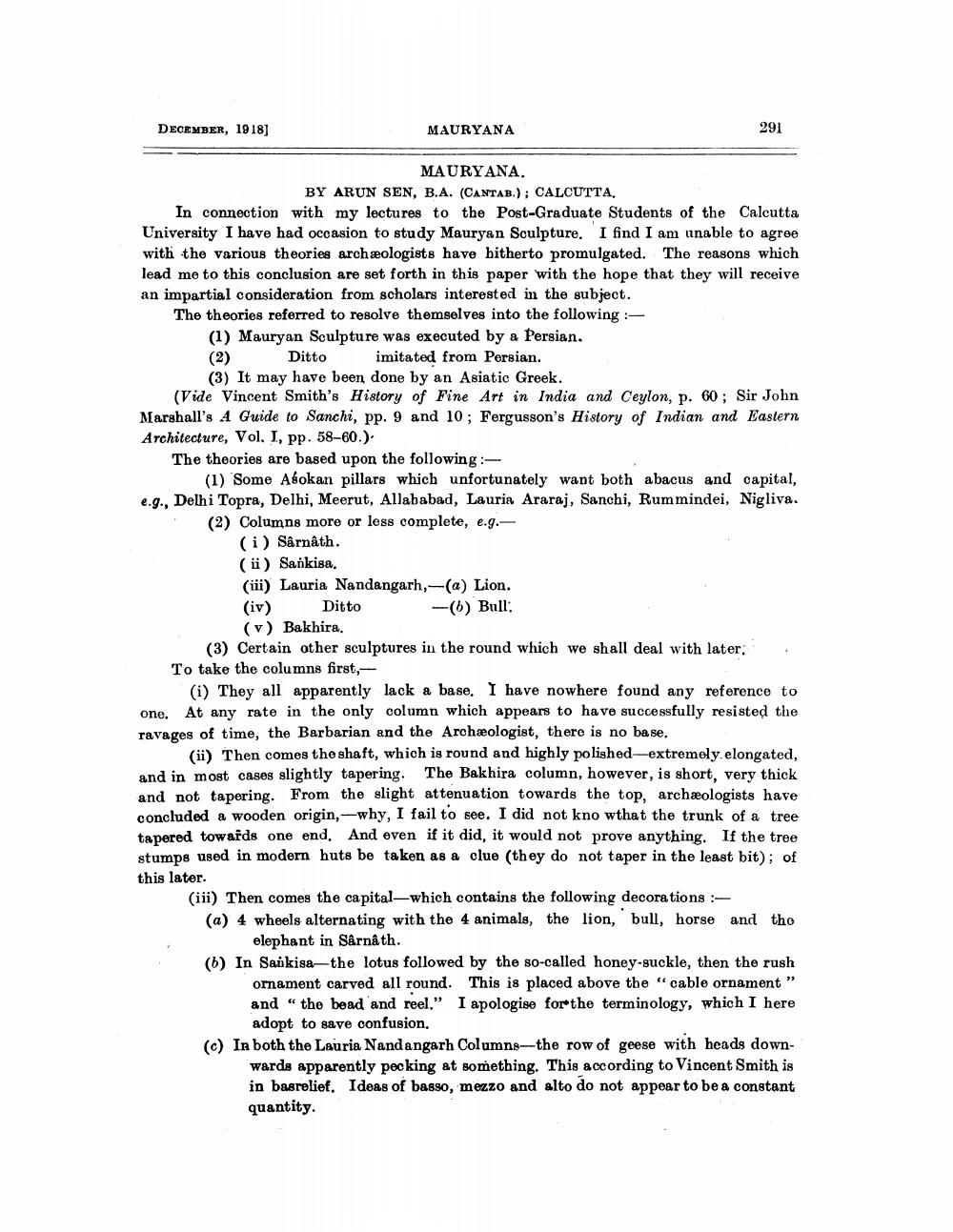________________
DECEMBER, 1918)
MAURYANA
291
MAURYANA.
BY ARUN SEN, B.A. (CANTAB.); CALCUTTA. In connection with my lectures to the Post-Graduate Students of the Calcutta University I have had occasion to study Mauryan Sculpture. I find I am unable to agree with the various theories archæologists have hitherto promulgated. The reasons which lead me to this conclusion are set forth in this paper with the hope that they will receive an impartial consideration from scholars interested in the subject. The theories referred to resolve themselves into the following:
(1) Mauryan Sculpture was executed by a Persian. (2) Ditto imitated from Persian.
(3) It may have been done by an Asiatic Greek. (Vide Vincent Smith's History of Fine Art in India and Ceylon, p. 60; Sir John Marshall's A Guide to Sanchi, pp. 9 and 10; Fergusson's History of Indian and Eastern Architecture, Vol. I, pp. 58-60.). The theories are based upon the following:
(1) Some Abokan pillars which unfortunately want both abacus and capital, e.g., Delhi Topra, Delhi, Meerut, Allahabad, Lauria Araraj, Sanchi, Rum mindei, Nigliva.
(2) Columns more or less complete, e.g.---
(i) Sârnâth. (ii) Sankisa. (iii) Lauria Nandangarh,-(a) Lion. (iv) Ditto
-(6) Bull: (v) Bakhira. (3) Certain other sculptures in the round which we shall deal with later: To take the columns first,
(i) They all apparently lack a base. I have nowhere found any reference to one. At any rate in the only column which appears to have successfully resisted the ravages of time, the Barbarian and the Archaeologist, there is no base.
(ii) Then comes the shaft, which is round and highly polished-extremely elongated, and in most cases slightly tapering. The Bakhira column, however, is short, very thick and not tapering. From the slight attenuation towards the top. archæologists have concluded a wooden origin,-why, I fail to see. I did not knowthat the trunk of a tree tapered towards one end. And even if it did, it would not prove anything. If the tree stumps used in modern huts be taken as a clue (they do not taper in the least bit); of this later.
(iii) Then comes the capital—which contains the following decorations :(a) 4 wheels alternating with the 4 animals, the lion, bull, horse and the
elephant in Sârnâ th. (b) In Sarkiss-the lotus followed by the so-called honey-suckle, then the rush
ornament carved all round. This is placed above the "cable ornament " and the bead and reel." I apologise for the terminology, which I here
adopt to save confusion. (c) In both the Lauria Nandangarh Columns--the row of geese with heads down
wards apparently pecking at something. This according to Vincent Smith is in basrelief. Ideas of basso, mezzo and alto do not appear to be a constant quantity.




